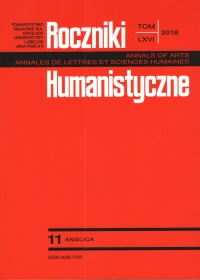Terms between Standardization and the Mental Lexicon
Abstract
Classical terminology, as reflected in the works of Eugen Wüster, assumes that the meaning of terms should be delimited precisely. Prototype theory can be seen as an existential threat to this approach, because it assumes that there is a gradual transition from clear instances of a concept to non-instances, without a natural cut-off point. The discussion of terms from a variety of different domains suggests that we should distinguish two types, called here terms in the narrow sense (TiNS) and specialized vocabulary. For specialized vocabulary, it is not a problem that concepts have a prototype structure. For TiNS, a clear delimitation of the meaning is required.
The introduction of TiNS as a special kind of term raises the question of their status as linguistic objects. For a word, there is no purely empirical basis to determine whether it exists as a word of English (or any other language), because neither English as a language nor any of its words are empirical entities. They exist as theoretical generalizations about speakers’ competence. TiNS are different. They are argued to exist as abstract entities in the same way as pieces of music.
References
Arntz, Reiner, Heribert Picht, & Klaus-Dirk Schmitz. 2014. Einführung in die Terminologiearbeit. 7. Aufl. Hildesheim: Olms.
Chomsky, Noam. 1965. Aspects of the Theory of Syntax. Cambridge, MA: MIT Press.
Chomsky, Noam. 1976. “On the Biological Basis of Language Capacities.” In Robert W. Rieber (ed.). The Neuropsychology of Language: Essays in Honor of Eric Lenneberg, 1-24. New York: Plenum.
van Dale. 1992. Van Dale Groot Woordenboek der Nederlandse Taal. 12th ed., edited by Guido Geerts and Hans Heestermans. Utrecht/Antwerpen: Van Dale Lexicografie.
ten Hacken, Pius. 2007. Chomskyan Linguistics and its Competitors. London: Equinox.
ten Hacken, Pius. 2008. “Prototypes and Discreteness in Terminology.” In Elisenda Bernal and Janet DeCesaris (eds.). Proceedings of the XIII Euralex International Congress, 979-987. Barcelona: IULA-UPF.
ten Hacken, Pius. 2009. “What is a Dictionary? A View from Chomskyan Linguistics.”, International Journal of Lexicography 22: 399-421. https://doi.org/10.1093/ijl/ecp026.
ten Hacken, Pius, and Renáta Panocová. 2011. “Individual and Social Aspects of Word Formation.” Kwartalnik Neofilologiczny 58: 283–300.
ten Hacken, Pius. 2012. “In what sense is the OED the definitive record of the English language?” In Ruth V. Fjeld and Julie M. Torjusen (eds.). Proceedings of the 15th EURALEX International Congress, 834–845. Oslo: Dept. of Linguistics.
ten Hacken, Pius. 2015. “Terms and Specialized Vocabulary: Taming the Prototypes.” In Hendrik J. Kockaert and Frieda Steurs (eds.). Handbook of Terminology. Vol. 1, 3–13. Amsterdam: Benjamins.
IAU. 2006. “IAU 2006 General Assembly: Result of the IAU Resolution votes.” IAU – International Astronomical Union. Accessed 15 February 2018. https://www.iau.org/news/pressreleases/detail/iau0603/.
IFAB. 2017. Laws of the Game 2017/18. Zürich: International Football Association Board.
Jackendoff, Ray. 2002. Foundations of Language: Brain, Meaning, Grammar, Evolution. Oxford: Oxford University Press.
Labov, William. 1973. “The Boundaries of Words and Their Meanings.” In Charles-James N. Bailey and Roger W. Shuy (eds.). New Ways of Analyzing Variation in English, 340-373. Washington, DC: Georgetown University Press.
Lerdahl, Fred, and Ray Jackendoff. 1983. A Generative Theory of Tonal Music, Cambridge, MA: MIT Press.
Margolis, Howard. 1993. Paradigms and Barriers: How Habits of Mind Govern Scientific Beliefs. Chicago: University of Chicago Press.
OED. 2018. Oxford English Dictionary. 3rd ed. Oxford: Oxford University Press. | OED. Oxford English Dictionary. The definitive record of the English language. Accessed 15 February 2018. www.oed.com.
Rosch, Eleanor. 1978. “Principles of Categorization.” In Eleanor Rosch and Barbara B. Lloyd (eds.). Cognition and Categorization, 27-48. Hillside, NJ: Lawrence Erlbaum.
Saussure, Ferdinand de. 1916/1981. Cours de linguistique générale, edited by Charles Bally and Albert Sechehaye. Édition critique préparée par Tullio de Mauro. Paris: Payot.
Temmerman, Rita. 2000. Towards New Ways of Terminology Description: The Sociocognitive Approach. Amsterdam: Benjamins.
Thèses. 1929. “Thèses présentées au Premier Congrès des philologues slaves.” Travaux du Cercle Linguistique de Prague 1: 5–29.
Wikipedia.nl. 2018. Wikipedia: De vrije encyclopedie. Accessed 15 February 2018. nl.wikipedia.org.
Wüster, Eugen. 1931. Internationale Sprachnormung in der Technik, Berlin: VDI.
Wüster, Eugen. 1979. Einführung in die allgemeine Terminologielehre und terminologische Lexikographie, edited by L. Bauer, Wien: Springer.
Zuivelonline (2018). “Leeftijd van kaas.” Zuivel online. Accessed 15 February 2018. zuivelonline.nl/zuivel/kaas/leeftijd-van-kaas.
Copyright (c) 2018 Roczniki Humanistyczne

This work is licensed under a Creative Commons Attribution-NonCommercial-NoDerivatives 4.0 International License.





